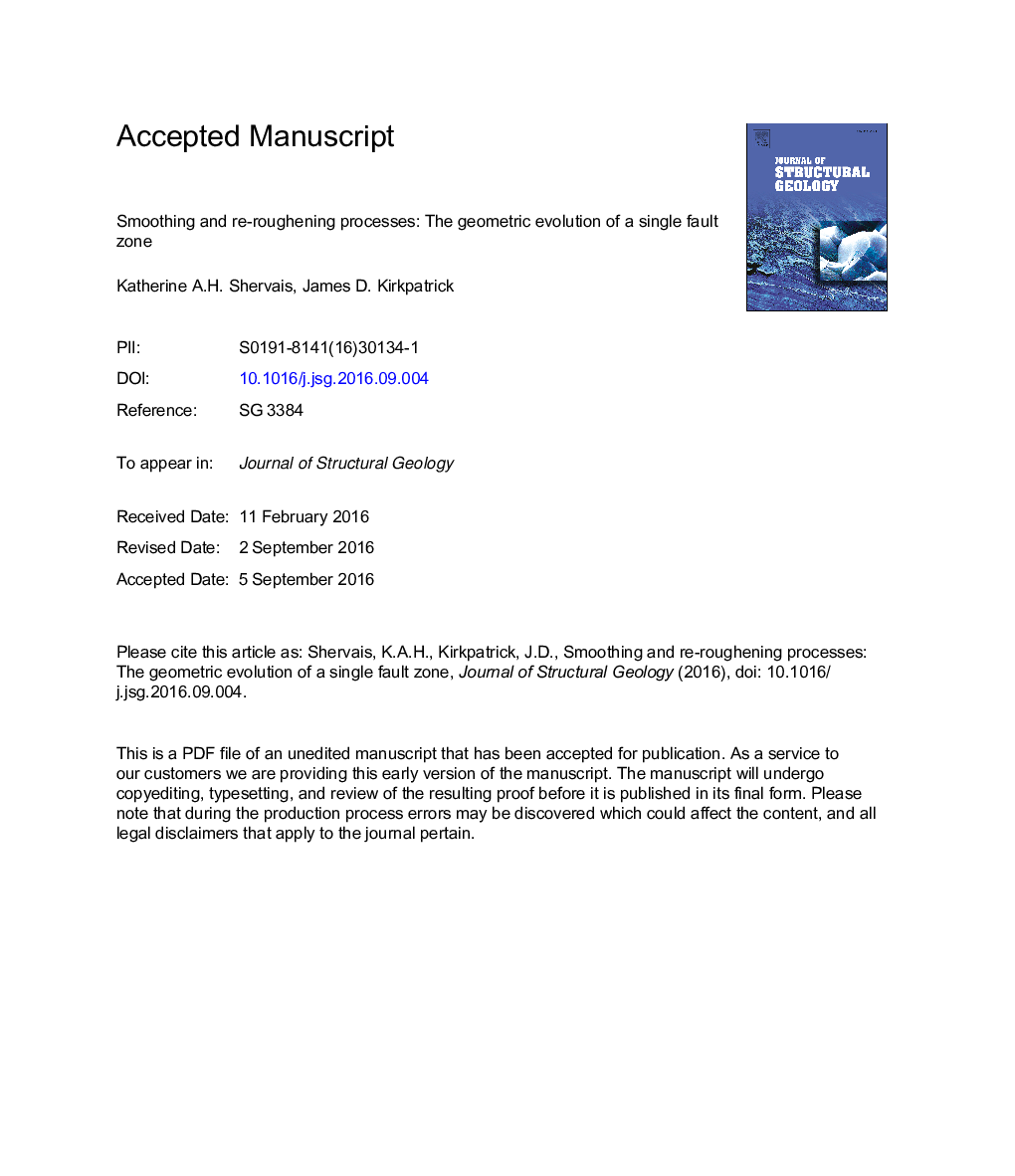| کد مقاله | کد نشریه | سال انتشار | مقاله انگلیسی | نسخه تمام متن |
|---|---|---|---|---|
| 6444606 | 1640489 | 2016 | 49 صفحه PDF | دانلود رایگان |
عنوان انگلیسی مقاله ISI
Smoothing and re-roughening processes: The geometric evolution of a single fault zone
ترجمه فارسی عنوان
فرآیندهای صاف کردن و دوباره خرد کردن: تحول هندسی یک منطقه گسل واحد
دانلود مقاله + سفارش ترجمه
دانلود مقاله ISI انگلیسی
رایگان برای ایرانیان
کلمات کلیدی
زلزله گسل، هسته گسل، تکامل هندسه گسیختگی، عیب، زاویه طبیعی زاویه طبیعی، منطقه لغزش اصلی،
موضوعات مرتبط
مهندسی و علوم پایه
علوم زمین و سیارات
زمین شناسی
چکیده انگلیسی
The geometry of a fault zone exerts a major control on earthquake rupture processes and source parameters. Observations previously compiled from multiple faults suggest that fault surface shape evolves with displacement, but the specific processes driving the evolution of fault geometry within a single fault zone are not well understood. Here, we characterize the deformation history and geometry of an extraordinarily well-exposed fault using maps of cross-sectional exposures constructed with the Structure from Motion photogrammetric method. The La Quinta Fault, located in southern California, experienced at least three phases of deformation. Multiple layers of ultracataclasite formed during the most recent phase. Crosscutting relations between the layers define the evolution of the structures and demonstrate that new layers formed successively during the deformation history. Wear processes such as grain plucking from one layer into a younger layer and truncation of asperities at layer edges indicate that the layers were slip zones and the contacts between them slip surfaces. Slip surfaces that were not reactivated or modified after they were abandoned exhibit self-affine geometry, preserving the fault roughness from different stages of faulting. Roughness varies little between surfaces, except the last slip zone to form in the fault, which is the smoothest. This layer contains a distinct mineral assemblage, indicating that the composition of the fault rock exerts a control on roughness. In contrast, the similar roughness of the older slip zones, which have comparable mineralogy but clearly crosscut one another, suggests that as the fault matured the roughness of the active slip surface stayed approximately constant. Wear processes affected these layers, so for roughness to stay constant the roughening and smoothing effects of fault slip must have been approximately balanced. These observations suggest fault surface evolution occurs by nucleation of new surfaces and wear by competing smoothing and re-roughening processes.
ناشر
Database: Elsevier - ScienceDirect (ساینس دایرکت)
Journal: Journal of Structural Geology - Volume 91, October 2016, Pages 130-143
Journal: Journal of Structural Geology - Volume 91, October 2016, Pages 130-143
نویسندگان
Katherine A.H. Shervais, James D. Kirkpatrick,
